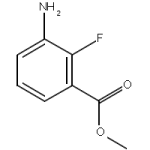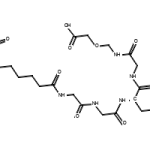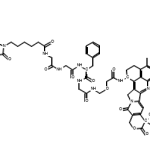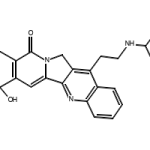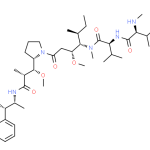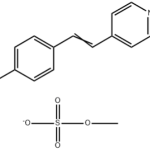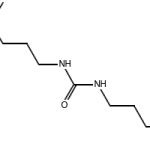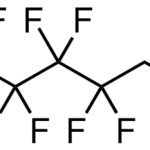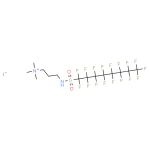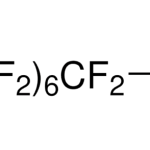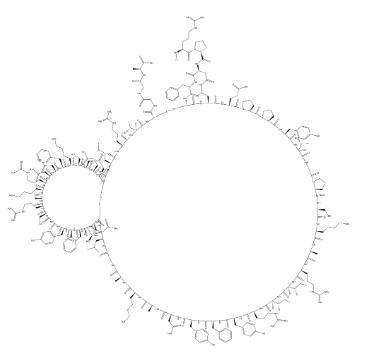
Identification
CAS Number
9087-70-1
Name
Recombinant Aprotinin
Synonyms
[9087-70-1]
232-994-9 [EINECS]
9004-04-0 [RN]
9087-70-1 [RN]
Antikrein ; Antilysin
Aprotinin
Aprotinin from bovine lung
MFCD00130541
YN 5080000
YN5080000
InChI
InChI=1S/C284H432N84O79S7/c1-21-144(9)222-271(439)337-174(68-46-105-309-282(300)301)239(407)340-187(120-160-77-85-164(374)86-78-160)251(419)341-185(116-156-55-29-24-30-56-156)250(418)342-188(121-161-79-87-165(375)88-80-161)252(420)346-191(123-208(291)378)246(414)322-149(14)230(398)326-168(62-35-39-98-285)234(402)319-146(11)227(395)314-132-215(385)324-181(113-141(3)4)247(415)354-199-137-452-453-138-200-263(431)336-179(97-112-448-20)242(410)331-176(70-48-107-311-284(304)305)244(412)363-226(154(19)372)274(442)358-197(233(401)316-129-212(382)312-130-213(383)318-151(16)278(446)447)135-449-451-139-201(355-253(421)186(117-157-57-31-25-32-58-157)344-256(424)195(127-220(393)394)350-267(435)204-72-50-109-366(204)275(443)167(289)61-43-102-306-279(294)295)265(433)339-182(114-142(5)6)248(416)338-180(93-96-218(389)390)276(444)368-111-52-74-206(368)277(445)367-110-51-73-205(367)268(436)349-189(122-162-81-89-166(376)90-82-162)259(427)362-224(152(17)370)269(437)317-133-216(386)365-108-49-71-203(365)266(434)357-202(264(432)333-169(63-36-40-99-286)235(403)320-148(13)229(397)328-175(69-47-106-310-283(302)303)243(411)360-223(145(10)22-2)272(440)361-222)140-454-450-136-198(325-214(384)131-313-211(381)128-315-232(400)183(119-159-75-83-163(373)84-76-159)351-270(438)221(143(7)8)359-258(426)190(118-158-59-33-26-34-60-158)352-273(441)225(153(18)371)364-245(413)177(335-262(199)430)91-94-207(290)377)261(429)334-172(66-44-103-307-280(296)297)236(404)321-147(12)228(396)327-170(64-37-41-100-287)237(405)330-173(67-45-104-308-281(298)299)238(406)345-192(124-209(292)379)255(423)347-193(125-210(293)380)254(422)343-184(115-155-53-27-23-28-54-155)249(417)332-171(65-38-42-101-288)240(408)353-196(134-369)260(428)323-150(15)231(399)329-178(92-95-217(387)388)241(409)348-194(126-219(391)392)257(425)356-200/h23-34,53-60,75-90,141-154,167-206,221-226,369-376H,21-22,35-52,61-74,91-140,285-289H2,1-20H3,(H2,290,377)(H2,291,378)(H2,292,379)(H2,293,380)(H,312,382)(H,313,381)(H,314,395)(H,315,400)(H,316,401)(H,317,437)(H,318,383)(H,319,402)(H,320,403)(H,321,404)(H,322,414)(H,323,428)(H,324,385)(H,325,384)(H,326,398)(H,327,396)(H,328,397)(H,329,399)(H,330,405)(H,331,410)(H,332,417)(H,333,432)(H,334,429)(H,335,430)(H,336,431)(H,337,439)(H,338,416)(H,339,433)(H,340,407)(H,341,419)(H,342,418)(H,343,422)(H,344,424)(H,345,406)(H,346,420)(H,347,423)(H,348,409)(H,349,436)(H,350,435)(H,351,438)(H,352,441)(H,353,408)(H,354,415)(H,355,421)(H,356,425)(H,357,434)(H,358,442)(H,359,426)(H,360,411)(H,361,440)(H,362,427)(H,363,412)(H,364,413)(H,387,388)(H,389,390)(H,391,392)(H,393,394)(H,446,447)(H4,294,295,306)(H4,296,297,307)(H4,298,299,308)(H4,300,301,309)(H4,302,303,310)(H4,304,305,311)
InChI Key
ZPNFWUPYTFPOJU-UHFFFAOYSA-N
SMILES
CCC(C)C1C(=O)NC(C(=O)NC(C(=O)NC(C(=O)NC(C(=O)NC(C(=O)NC(C(=O)NC(C(=O)NC(C(=O)NC(C(=O)NCC(=O)NC(C(=O)NC2CSSCC3C(=O)NC(C(=O)NC(C(=O)NC(C(=O)NC(CSSCC(C(=O)NC(C(=O)NC(C(=O)N4CCCC4C(=O)N5CCCC5C(=O)NC(C(=O)NC(C(=O)NCC(=O)N6CCCC6C(=O)NC(CSSCC(C(=O)NC(C(=O)NC(C(=O)NC(C(=O)NC(C(=O)NC(C(=O)NC(C(=O)NC(C(=O)NC(C(=O)NC(C(=O)NC(C(=O)NC(C(=O)NC(C(=O)N3)CC(=O)O)CCC(=O)O)C)CO)CCCCN)CC7=CC=CC=C7)CC(=O)N)CC(=O)N)CCCNC(=N)N)CCCCN)C)CCCNC(=N)N)NC(=O)CNC(=O)CNC(=O)C(NC(=O)C(NC(=O)C(NC(=O)C(NC(=O)C(NC2=O)CCC(=O)N)C(C)O)CC8=CC=CC=C8)C(C)C)CC9=CC=C(C=C9)O)C(=O)NC(C(=O)NC(C(=O)NC(C(=O)N1)CCCNC(=N)N)C)CCCCN)C(C)O)CC1=CC=C(C=C1)O)CCC(=O)O)CC(C)C)NC(=O)C(CC1=CC=CC=C1)NC(=O)C(CC(=O)O)NC(=O)C1CCCN1C(=O)C(CCCNC(=N)N)N)C(=O)NCC(=O)NCC(=O)NC(C)C(=O)O)C(C)O)CCCNC(=N)N)CCSC)CC(C)C)C)CCCCN)C)CC(=O)N)CC1=CC=C(C=C1)O)CC1=CC=CC=C1)CC1=CC=C(C=C1)O)CCCNC(=N)N)C(C)CC
Molecular Formula
C284H432N84O79S7
Molecular Weight
6511.44
EINECS
232-994-9
MDL Number
MFCD00130541
Properties
Appearance
White or off white, or yellowish powder
Safety Data
Personal Protective Equipment
Eyeshields, Gloves, type N95 (US)
RIDADR
NONH for all modes of transport
WGK Germany
1
RTECS
YN5080000
Specifications and Other Information of Our Recombinant Aprotinin CAS 9087-70-1
Solubility (5mg/ml in 0.9%NaCl)
Clear to very slight hazy
Protein Content [E1% A280 nm = 8.4]
≥60%
Purity(HPLC)
≥95%
Specific activity(EPU /mg protein)
≤ 0.8(3 EPU/ml in water)
Absorbance (277nm)
≤0.8 (3EPU/ml in water)
Unit definition
One trypsin inhibitor unit (EPU) will decrease the activity of 2 trypsin units by 50% where one trypsin unit will hydrolyze 1.0 μmol of N-benzoyl-L-arginineethyl ether(BAEE) per sec at pH 7.6 at 25 °C.
Description
Aprotinin is a competitive serine protease inhibitor that inhibits trypsin, chymotrypsin, kallikrein and plasmin. Aprotinin forms stable complexes with and blocks the active sites of enzymes. Binding is reversible with most aprotinin-protease complexes and dissociating at pH <3.0. Effective concentration is equimolar with protease. YaxinBio recombinant aprotinin is a genetically engineered protein expressed in E.coli and purified by multi-column.The amino acid sequence of recombinant trypsin is identical to bovine lung derived aprotinin,with equivalent properties compared to native aprotinin and can replace native trypsin for using in a variety of biotechnological processes.
Source
Recombinant aprotinin is a genetically engineered protein expressed in E.coli
Protein Sequence
The amino acid sequence of recombinant aprotinin is identical to bovine lung derived aprotinin.
Recommended usage
Effective concentration is equimolar with protease. The recommend binding is pH>6.0 and it will dissociate at pH <3.0. Dissolve powder in 0.9%NaCl,then the liquid should be stored at -20℃ or below.
Stability of storage
Recombinant taprotinin lyophilized should be stored under 2-8℃ in sealed container. It is stable within 24 months.
Stability of transport
The product is stable by blue ice insulation transport.
Advantage
- Animal origin free : recombinant trypsin is no exogenous virus contamination,and any animal origin material is not used in the production process.
- Stable quality : Mass production can ensure stable and continuous batch production.It is no difference between the batch and the product quality is stable.
- High purity : Higher specific activity.Host protein residues is less than the limits of biological products.
- Lyophilized powder : The product is lyophilized powder and is easy to store and transport.
Known Application
Aprotinin is a competitive serine protease inhibitor that inhibits trypsin, chymotrypsin, kallikrein and plasmin. Aprotinin forms stable complexes with and blocks the active sites of enzymes. Recombinant aprotinin is with equivalent properties compared to native aprotinin and can replace native trypsin for using in a variety of biotechnological processes,such as inhibition of serine protease activity in recombinant protein production,cell culture and so on.

